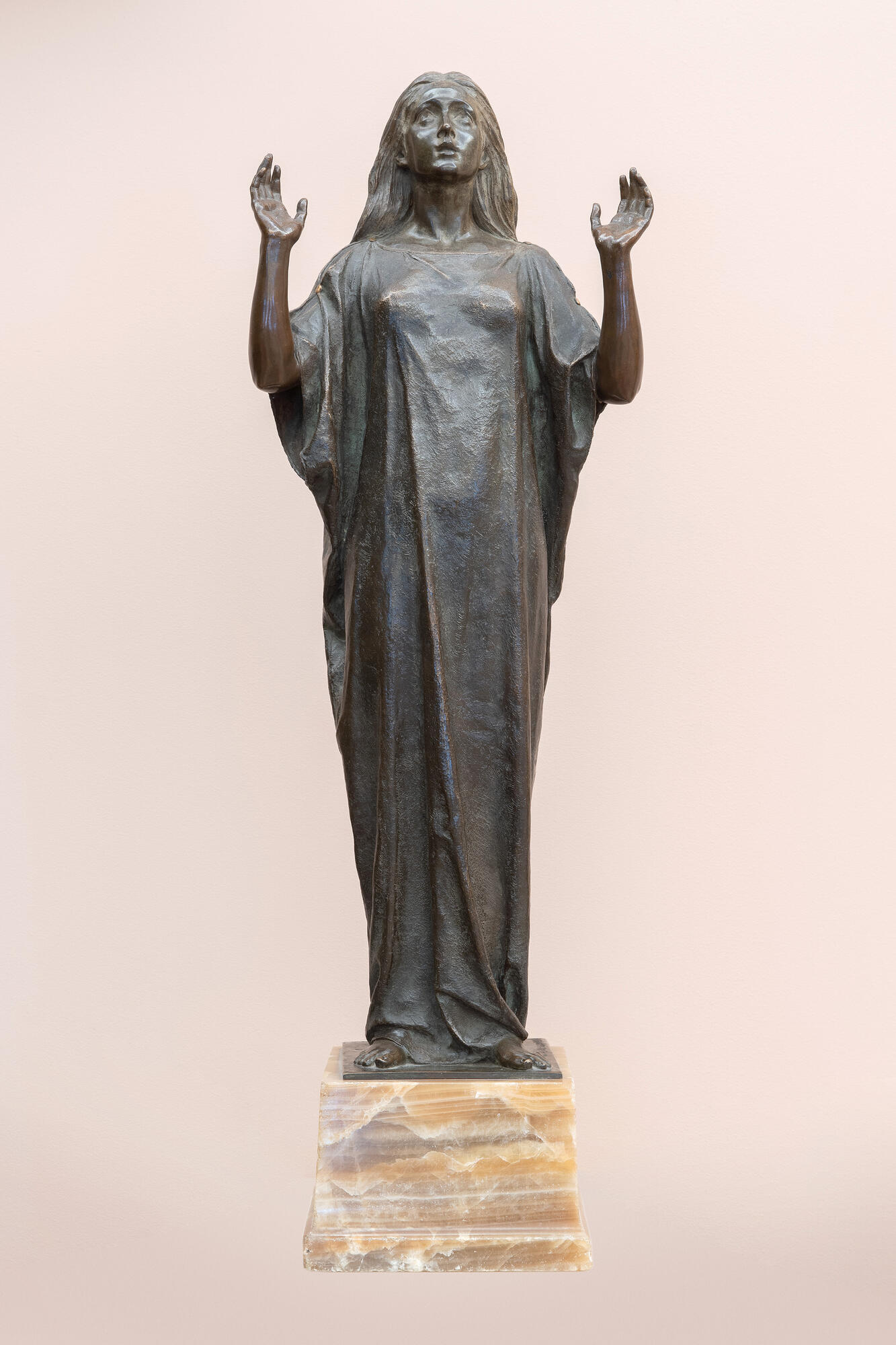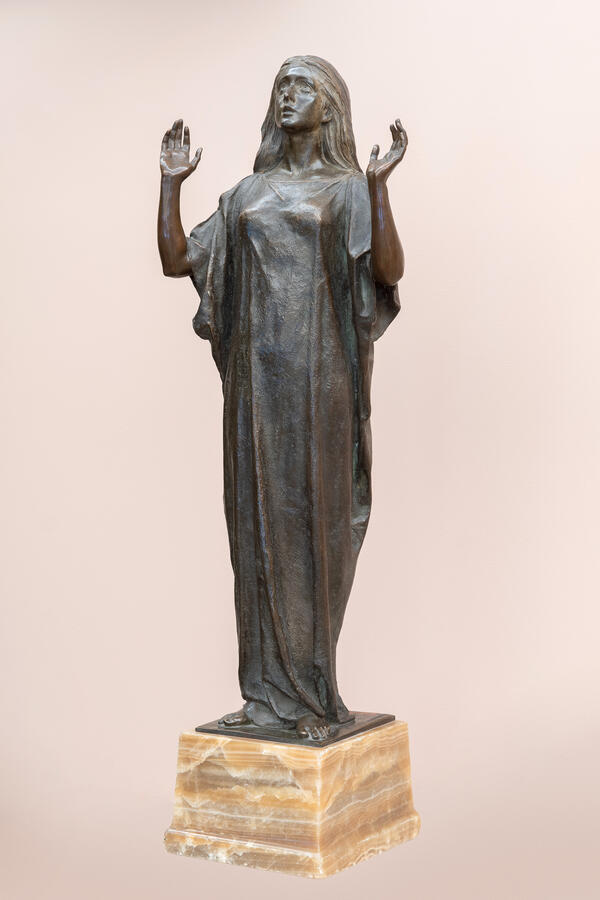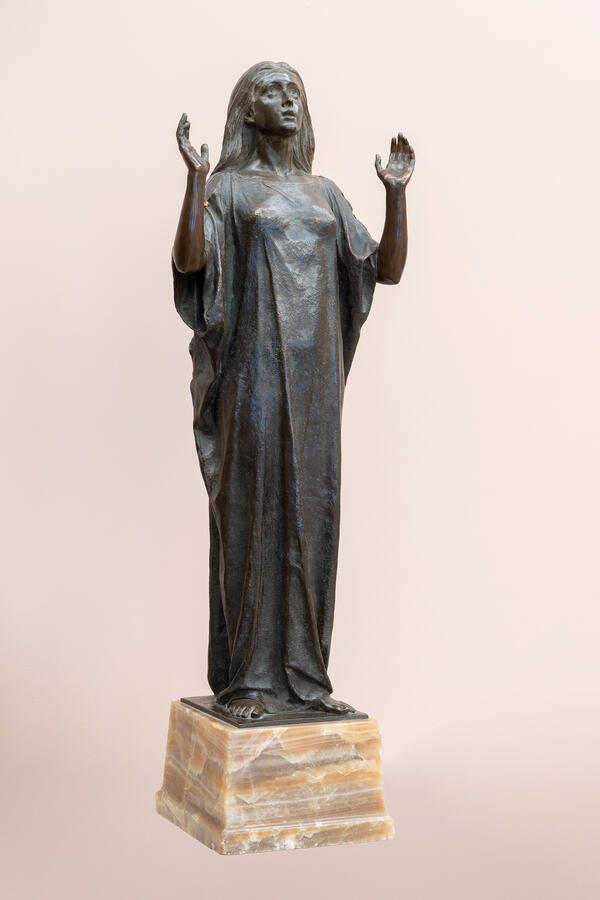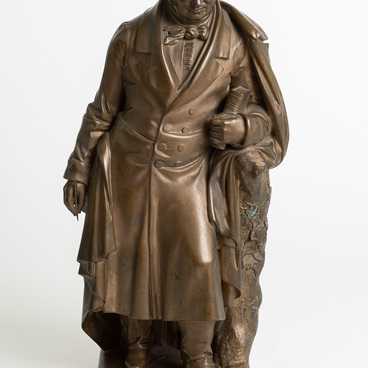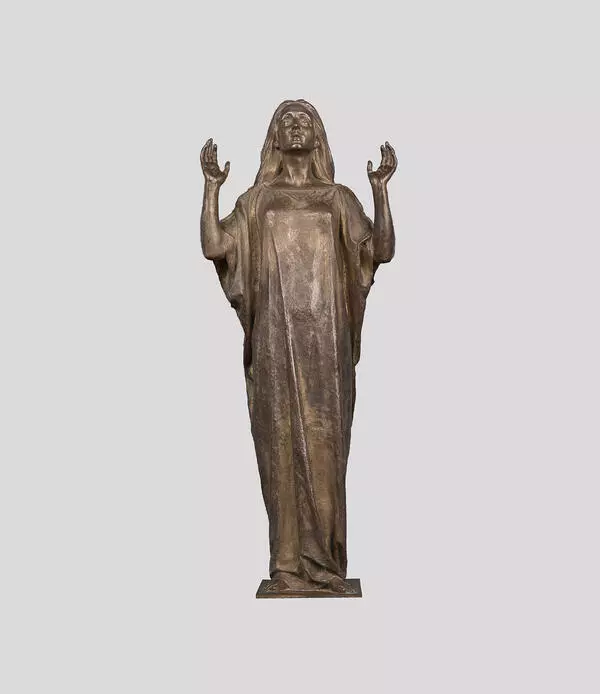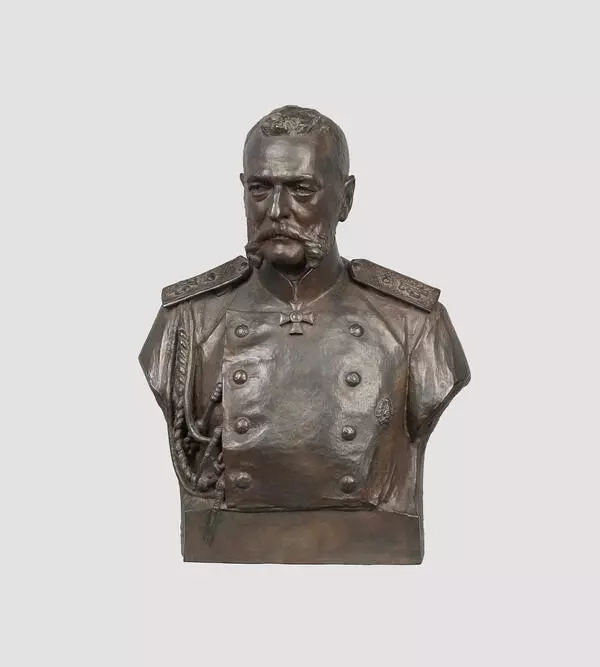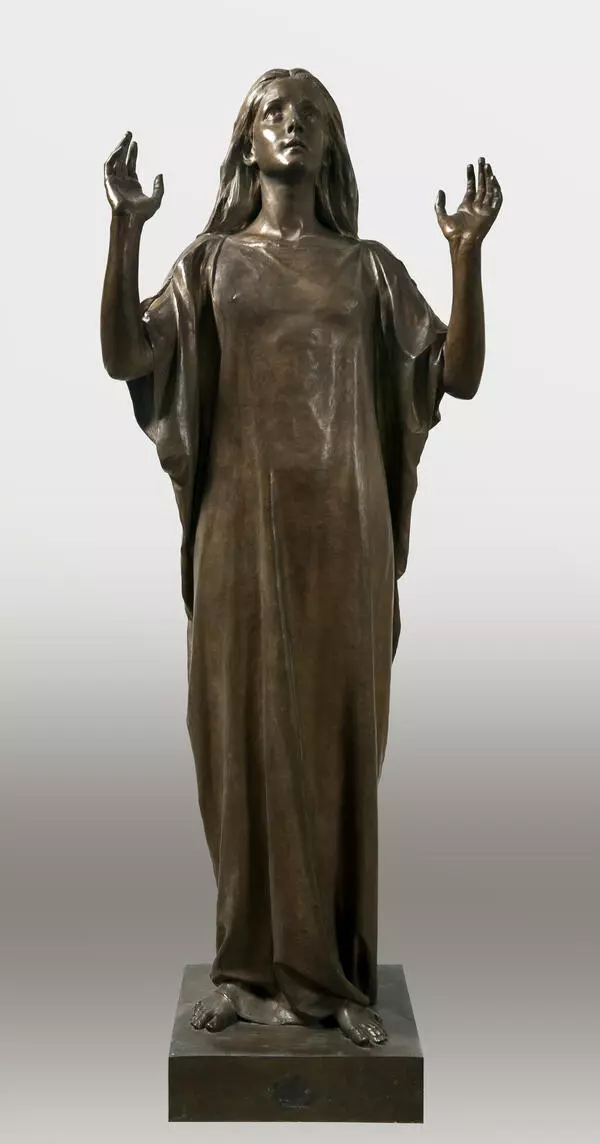The bronze statuette in the interior of the Maple Drawing Room depicts St. Barbara raising her hands in prayer.
Saint Barbara was a Christian martyr. She was born in a noble pagan family in the city of Heliopolis (now the territory of Syria) during the reign of Emperor Maximian (305–311). Barbara’s father Dioscorus, having been early widowed, was attached to his only daughter. In order to keep the girl away from prying eyes and to prevent her from communicating with Christians, he built a castle for her, from which she could only leave with her father’s permission. Contemplating from the tower the beauty of the world around her, Barbara longed to know its true creator. As time passed, the rich and noble suitors began to come more and more often to Dioscorus, asking for his daughter’s hand. Her father allowed her to leave the tower, so that the companionship of her friends might encourage her to get married.
One day, while her father was away on a trip, Barbara met local Christian women who told her about the Triune God. At the time, a priest was passing through Heliopolis. When she heard about him, Barbara asked for the sacrament of baptism to be performed on her. On his return, Dioscorus heard from Barbara the Christian doctrinal instructions. He became enraged and disowned her. She was asked to renounce her faith, but Barbara was adamant. She was beaten with ox veins, and her wounds were then covered with a rough hairсloth. But the next day there was no sign of her being tortured. They dragged her naked through the city, and then hung her on a tree and tortured her for a long time. St. Barbara was executed by Dioscorus himself.
The relics of the holy Great Martyr Barbara in the 6th century were transferred to Constantinople, and in the 12th century the daughter of Byzantine emperor Alexei Komnin (1081 — 1118), Princess Barbara, entering into marriage with Russian Prince Mikhail Iziaslavich, brought them with her to Kiev, where they rest today.
The statuette was created by the Russian sculptor and portraitist Vladimir Beklemishev. The master sculpted this work in Rome in 1903. Beklemishev graduated from the Imperial Academy of Arts. Since 1894, he had been a professor and head of the sculpture workshop at the Higher Art School at the Imperial Academy of Arts. Among his pupils were such sculptors as Mikhail Blokh, Vasily Bogatyrev, Anna Golubkina, Leopold Dietrich, Mikhail Kerzin, Vasily Kozlov, Sergey Konenkov. After the revolution of 1917, the sculptor Beklemishev was appointed the Commissioner of the Department for the Protection of Antiquities and Art Monuments in Petrograd.
Saint Barbara was a Christian martyr. She was born in a noble pagan family in the city of Heliopolis (now the territory of Syria) during the reign of Emperor Maximian (305–311). Barbara’s father Dioscorus, having been early widowed, was attached to his only daughter. In order to keep the girl away from prying eyes and to prevent her from communicating with Christians, he built a castle for her, from which she could only leave with her father’s permission. Contemplating from the tower the beauty of the world around her, Barbara longed to know its true creator. As time passed, the rich and noble suitors began to come more and more often to Dioscorus, asking for his daughter’s hand. Her father allowed her to leave the tower, so that the companionship of her friends might encourage her to get married.
One day, while her father was away on a trip, Barbara met local Christian women who told her about the Triune God. At the time, a priest was passing through Heliopolis. When she heard about him, Barbara asked for the sacrament of baptism to be performed on her. On his return, Dioscorus heard from Barbara the Christian doctrinal instructions. He became enraged and disowned her. She was asked to renounce her faith, but Barbara was adamant. She was beaten with ox veins, and her wounds were then covered with a rough hairсloth. But the next day there was no sign of her being tortured. They dragged her naked through the city, and then hung her on a tree and tortured her for a long time. St. Barbara was executed by Dioscorus himself.
The relics of the holy Great Martyr Barbara in the 6th century were transferred to Constantinople, and in the 12th century the daughter of Byzantine emperor Alexei Komnin (1081 — 1118), Princess Barbara, entering into marriage with Russian Prince Mikhail Iziaslavich, brought them with her to Kiev, where they rest today.
The statuette was created by the Russian sculptor and portraitist Vladimir Beklemishev. The master sculpted this work in Rome in 1903. Beklemishev graduated from the Imperial Academy of Arts. Since 1894, he had been a professor and head of the sculpture workshop at the Higher Art School at the Imperial Academy of Arts. Among his pupils were such sculptors as Mikhail Blokh, Vasily Bogatyrev, Anna Golubkina, Leopold Dietrich, Mikhail Kerzin, Vasily Kozlov, Sergey Konenkov. After the revolution of 1917, the sculptor Beklemishev was appointed the Commissioner of the Department for the Protection of Antiquities and Art Monuments in Petrograd.
